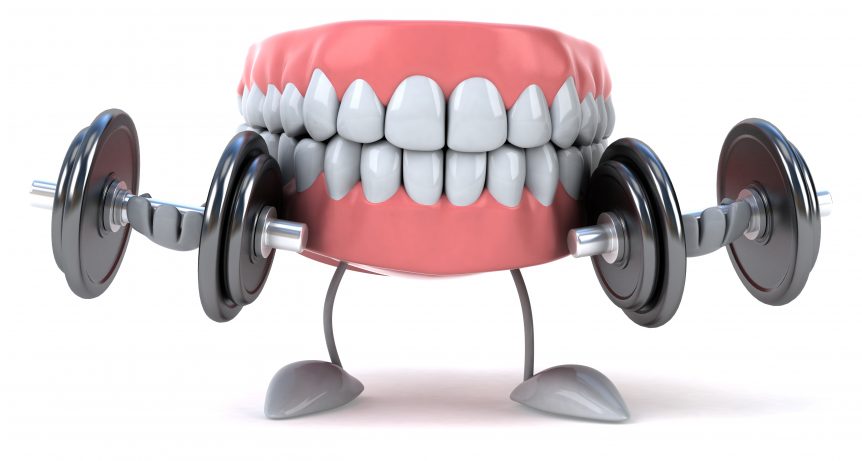Preventative dentistry is designed to help you protect and maintain your oral health by taking action to prevent the development of undesirable oral issues and diseases. However, the fact is that sometimes even the most diligent preventative measures may not be able to thoroughly protect against all oral health issues, in which case you will need to receive restorative dental care.
Restorative dentistry has to do with diagnosing and treating oral diseases and other issues in order to restore oral comfort and health. This care is absolutely essential as ignoring these issues can lead to further damage, discomfort and even major health conditions. Restorative dentistry can include handling teeth that are decayed, chipped, cracked, discolored or missing. There are several different treatment options for restorative dentistry, and the exact procedure used is largely dependent upon the exact type and extent of tooth damage.
Tooth Colored Fillings
Where there has been some decay on the surface of the tooth, a dental filling is necessary in order to restore the integrity of the surface of the tooth and to prevent further, deeper damage. There are a variety of dental filling materials available, but some of these options are limited to the back teeth, as they are colored and can therefore make it obvious that one has had restorative dental care. Composite fillings are a type of resin that can be used to restore the decayed surfaces of any tooth in the mouth, as they are tooth-colored and therefore very difficult to detect, which makes them more cosmetically appealing.
Crowns
Where there has been more extensive damage to a tooth, as when it has been chipped, cracked or significantly decayed, a dental filling is insufficient to restore the structure of the tooth and a crown is needed. A crown can be constructed of gold, porcelain or some other ceramic material, and it covers an entire portion of the tooth so as to prevent further discomfort and damage.
Bridges
Where there are one or more missing teeth, a dental bridge may be used to help prevent the adjacent teeth from drifting into the gap, and it can also restore your ability to speak and chew properly. A dental bridge is exactly what it sounds like–a bridge that is made by placing crowns on healthy teeth in order to anchor a false tooth that is placed in between them. The false tooth, called a pontic, can be made from gold, alloy or porcelain, and as it is not an implant attached to the jaw bone, it requires the supporting bridge from the surrounding healthy teeth in order to remain in place.
Implants
Dental implants can be an appealing alternative to bridges and conventional dentures. These metal posts or frames are fused to the jawbone, which allows them to provide stable support to artificial teeth so they won’t slip or shift, especially when eating or speaking. They can also feel more natural than bridges or dentures, and are helpful in cases when these other treatments are impossible due to sore spots, poor ridges, gagging or other issues. An implant does not require the preparation or grinding down of adjacent teeth, but they do require healthy gums and good bone support.
Veneers
Dental veneers can be useful in situations where teeth are extensively discolored, worn down, chipped or broken, misaligned, uneven, irregularly shaped or have gaps between them. The veneer is a very thin, custom-made shell that is designed to cover a tooth’s surface in order to improve its appearance. Once bonded to the front of the tooth, the veneer changes the tooth’s color, shape, size or length, so it takes on the appearance of a healthy, natural tooth.
Full Dentures
Full dentures replace all of the teeth in your mouth when these teeth have been lost or damaged for some reason. The gum-colored acrylic base, which is custom-made based on impressions taken of your mouth, fits over your gums and can be easily removed for cleaning and comfort. With conventional dentures, remaining teeth that need to be removed are extracted and the tissues are allowed to fully heal prior to impressions being taken and the dentures being designed. As full tissue healing can take several months to occur, this does mean that the patient doesn’t have teeth for that amount of time. An alternative to this is an immediate denture, which is inserted right after any remaining teeth are extracted. Since immediate dentures ensure the individual is not without teeth for any length of time, they can be more desirable than conventional dentures. However, they will need to be relined a few months after they are first inserted as the jaw bone will reshape as it heals.
Partial Dentures
Like full dentures, partial dentures consist of a gum-colored acrylic base that is placed over your gums. However, unlike full dentures, partial dentures are used when there are one or more natural teeth remaining in the mouth and gaps need to be filled to ensure that the natural teeth don’t change position.
Request an Appointment

